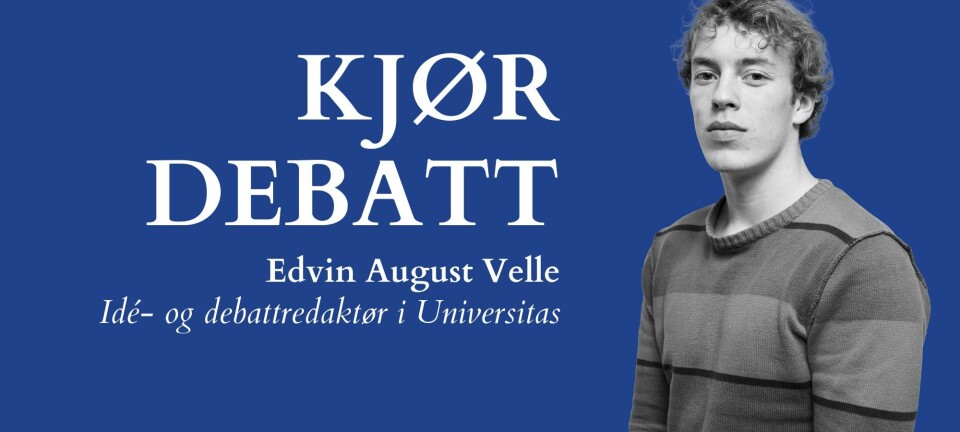Jenufa and Rigoletto:
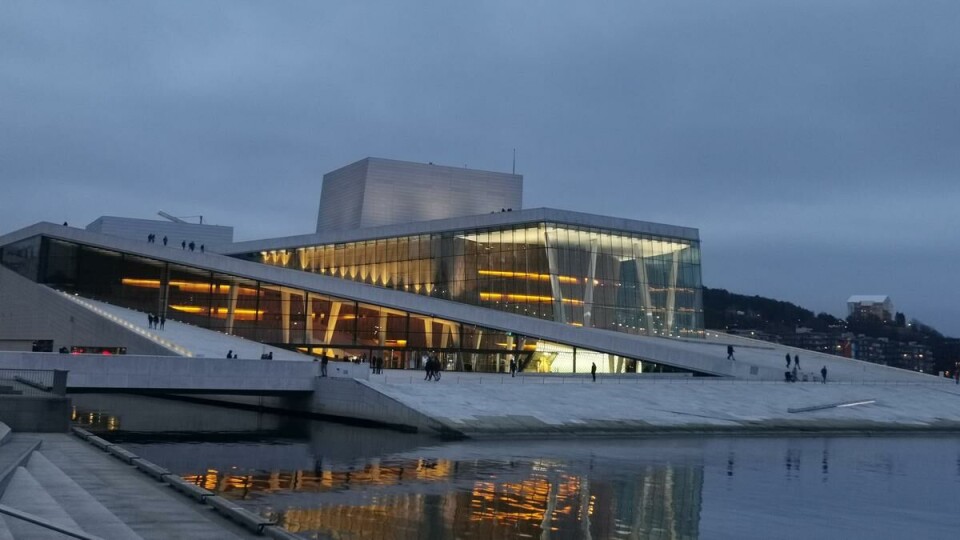
A Nordic Twist to Classical Opera
While central Europe is known for upholding its classical cultural heritage - just think of the New Year Concert by the Vienna Philharmonic Orchestra or one of the oldest opera houses in the world, Teatro La Fenice in Venice - the northern European countries’ greatest export in the arts-sphere is certainly architecture.
Nordic Design is a trademark on its own. Combine these two, and you get an evening at Oslo Operahuset. A mix of cultures and styles with one or the other surprise up the sleeve. Alluding to the well-known Sydney Opera House, Oslo Operahuset’s location was decided upon by Stortinget to lie in the harbor of the Nordic capital. The architectural gem with its clear-edged, light-filled architecture resembling an iceberg, counters the dark themes and entangled relationships often to be found in operas such as Rigoletto or Jenufa, which both are currently on programme at Oslo Operahuset.
Brightly lit from the inside, the colossus seems to swallow the crowd of opera-enthusiasts streaming towards the entrance before each performance. As the sun sets over the harbor in the evening, it casts its last rays through the sculpture She Lies by Monica Bonvicini located close by in the Oslofjord. The piece of art is moved almost unnoticeably by the cold wind and minimal waves, thereby making the facade of Operahuset appear to be ever-changing. This concentration of sunlight triggers the fear that the architectural gem might dissolve like an iceberg in the first days of spring.

The wall panels lying behind the enormous outside glass-walls, too, intensify this feeling as their hexagonal openings illuminated from below and behind constantly change colours, creating the illusion of water flowing down from the top of the iceberg. If these design-elements were not able to make the rock-solid iceberg-resembling architectural masterpiece melt, the odds that it was to happen increased when the author of this article, a Vienna-based Erasmus-student with a heart burning for classic culture who has been deprived of such experience since their arrival in Norway, entered the building, upon which a warm feeling close to that of coming home spread in their chest. Veldig hyggelig.
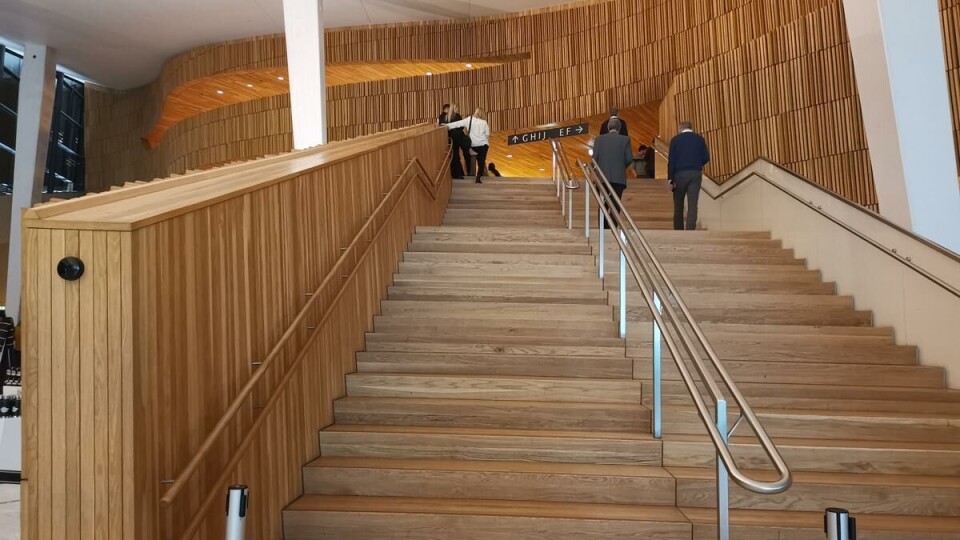
The clear cut yet waving panels of oak-wood in the grand hall evoke memories of an intimate night at home with family, all the while being seated among up to 1,363 others. If this number of viewers in the horseshoe-shaped auditorium were to be reached, the biggest chandelier in Norway with a diameter of almost 7 meters would be just right to cast light into every of the non-existent corners of the hall. With the chandelier’s position off the central axis, the irregularity of the wooden panels lining the tiers is continued up until the grand hall’s highest point.

However, the seats are distributed equally enough to offer everyone the best view possible in their chosen category of seat. The auditive experience is more likely to be distorted as a noticeable echo of the performing artists could reach the attentive listener’s ear. The ensemble of Oslo Operahuset plays their instruments wonderfully enough to make the redundancy of sounds more pleasant than irritating. Not only the musicians offer a marvelous experience for the ears: with their agitated gestures they show the spectators their passion for their respective instruments.
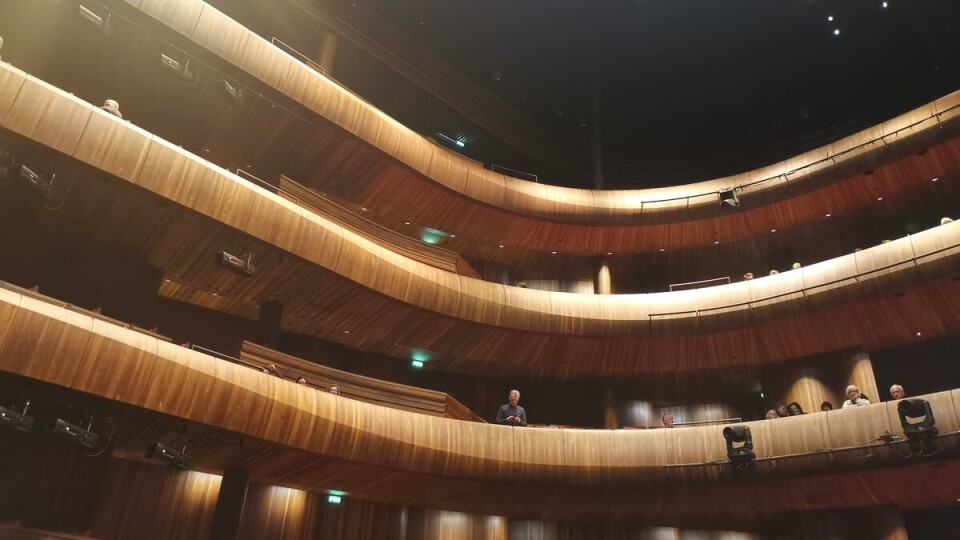
Up on the stage above the orchestra-trench, the production team as well as the artists hold the audience in their spell. What other to be anticipated when listening to some of the finest opera pieces, such as Jenufa by Leoš Janáček or Rigoletto by Giuseppe Verdi. For the latter, the production has excelled in dragging the fame of this gem of an opera from the sun-filled Mediterranean to the snow-filled north. Upon purchasing the ticket, what was expected was an evening just like the facade of Operahuset, consisting of 90% Italian and 10% Norwegian marble. This should not hold true, as the performing artists as well as the entire team behind the production achieved breaking up the classic structures of the Italian musical masterpiece and exploiting the possibilities of the malleable libretto and chords.
Keep in mind that until the 9th of April you get a fantastic chance to attend opera and ballet-performances at Oslo Operahuset, saving 50% per ticket.
The actors’ play was theoretically enabled to be central, given the scenery was solely composed of a moving replica of a barren forest towards the right side of the stage. Unfortunately, the abundant spatial resources were not entirely made use of as the actors, too, did not trail off far from the stage piece. Had the choir, whose headbanging performance alluded to the hard-rock-inspired Norwegian entries to the Eurovision Song Contest, spread out, the dynamic of the play could have been liberated from the confines of the fake-trees and miniature-housings. A more open approach was taken in the interplay of the costume-designs. The majority of actors on stage, dressed in mud-coloured medieval outfits, was interrupted by the intensive pink Barbie-dress of Rigoletto’s daughter, Gilda, and the glittery mini-dress of the later assassin Sparafucile’s sister, Maddalena.
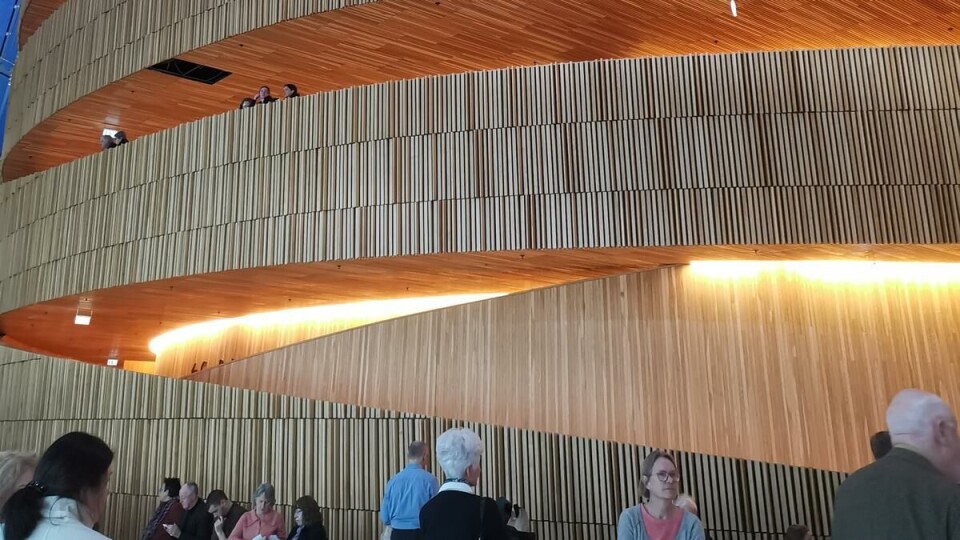
The audience's dress-code was caught somewhere in the middle between a relaxed business-fit and a shabby chic, with lots of room for interpretation which was taken to its’ borders. When arriving at the Operahuset, there is no need to queue for handing ones’ coat to the garderobe and also no need to be sure to remember the cloakroom-money, as there is a free cloakroom snuggled in the area where the descending roof cojoins the ground. This may also be the reason as to why the way the audience spends their break at Oslo Operahuset may come as unconventional to someone used to other opera-houses like the Viennese State Opera. In Oslo, it could be possible to stumble across someone unpacking their sandwich they meal-prepped at home or bought at one of the Operahuset’s kiosks offering not only wine and champagne but also cinema-snacks like chips and chocolate bars. In case the kiosk does not present itself of interest in the break between acts, the Operahuset’s very own shop may be more convincing. There, everything from CD’s, miniature models of the building to be assembled at home or postcards, which are of such photographical value that they could easily be hung up in one’s own four walls as a mini piece of art to commemorate the visit can be purchased.
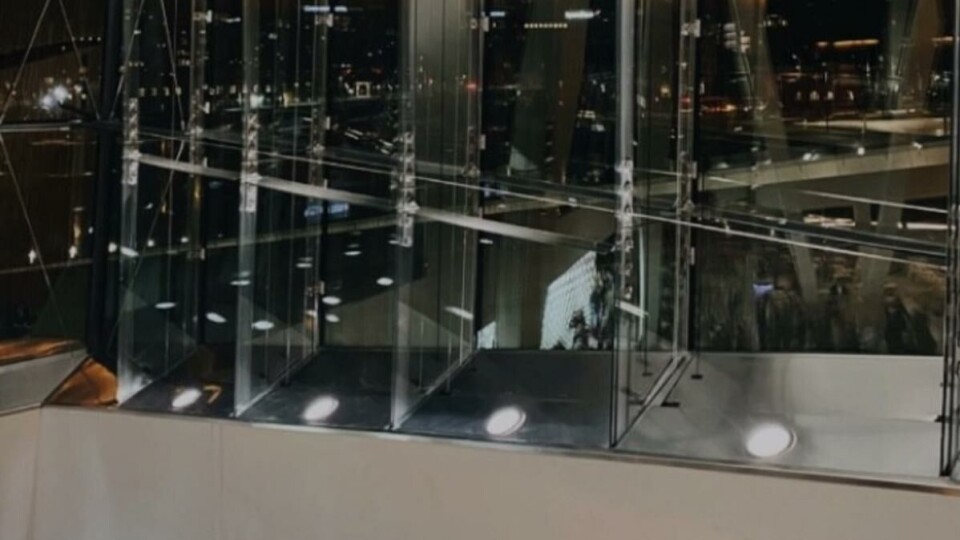
The end of the break is indicated by a melodious ringtone, gently calling the audience back to their seats. To find those could turn into a scavenger-hunt for first-time visitors given there are no employees guiding them towards their seat. On the other hand, this allows for changing one’s seat almost unnoticed, given the low-budget seat is left behind and the hunt for an abandoned full-price seat in the areas of the auditorium with a better view is successful. This short-hand change can massively contribute to an improved understanding of the processes on stage.
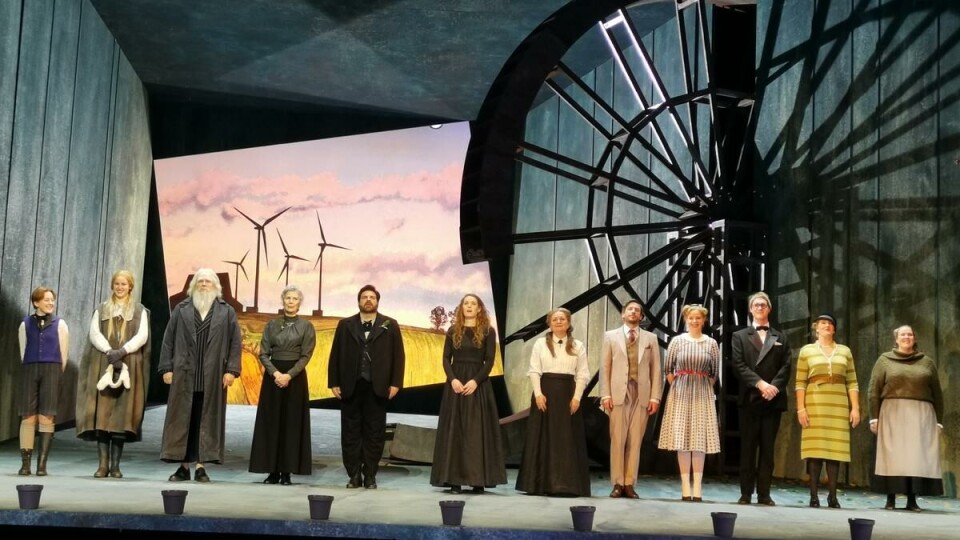
This is especially the case for operas set in a richly equipped scenery like Jenufa, the second opera currently on programme besides the classic Rigoletto. While the latter can be described as a heavily reduced and restricted spectacle, all in terms of scenery, costume design and even vocal performance, the former comes forth in a more elaborate manner in various regards. The costume design adhered more to the classical approach to opera than in Operahuset’s interpretation of Verdi’s piece. While Rigoletto appeared like the hunchback of Notre Dame removed from the surroundings of the Disney movie he belongs to, the Disney characteristics in Jenufa were more strongly established, with a small nod given towards Beauty and the Beast through the main characters’ natural yet graceful style. The scenery, too, was more richly equipped, thereby strongly supporting the viewers’ imagination up to a point where there was nothing left for interpretation, such as in a villagefete-turned-orgy-scene. Overall, it seemed as if the whole production of the incontestably less known Jenufa was intended to atone the sparse performance of Verdi’s masterpiece.
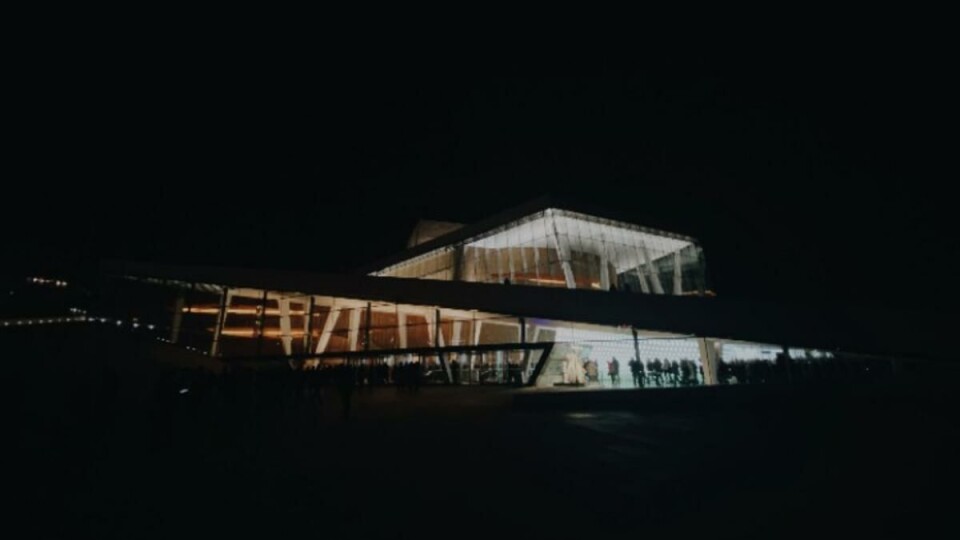
Having watched the performance, the Norwegian audience of any size habitually pays the artists with clamorous applause, occasionally also with standing ovations. Notwithstanding the quality of the performance, this appeared to be an overcompensation for either of the two minor yet quite frequent interruptions coming from the seats during the entirety of the evening, such as phones repeatedly ringing or even conversations loud enough to be overheard by the surrounding people. Nevertheless, Oslo Operahuset can from an overall point of view be applauded for the experience it offers to all its visitors. The incomparable architectural setting in combination with the leant-back atmosphere inside makes it an open space accessible to everyone. From those wanting to overlook the sun setting over the Oslofjord from the Operahuset’s roof to those with a somewhat tight budget that still can rely on getting a performance outdoing their tickets’ value It wouldn’t be astounding if the hunchback of Oslo Operahuset, Rigoletto, were accompanied by a welcoming chandelier greeting the audience with a heart-warming performance of «Be Our Guest» anytime soon.
























